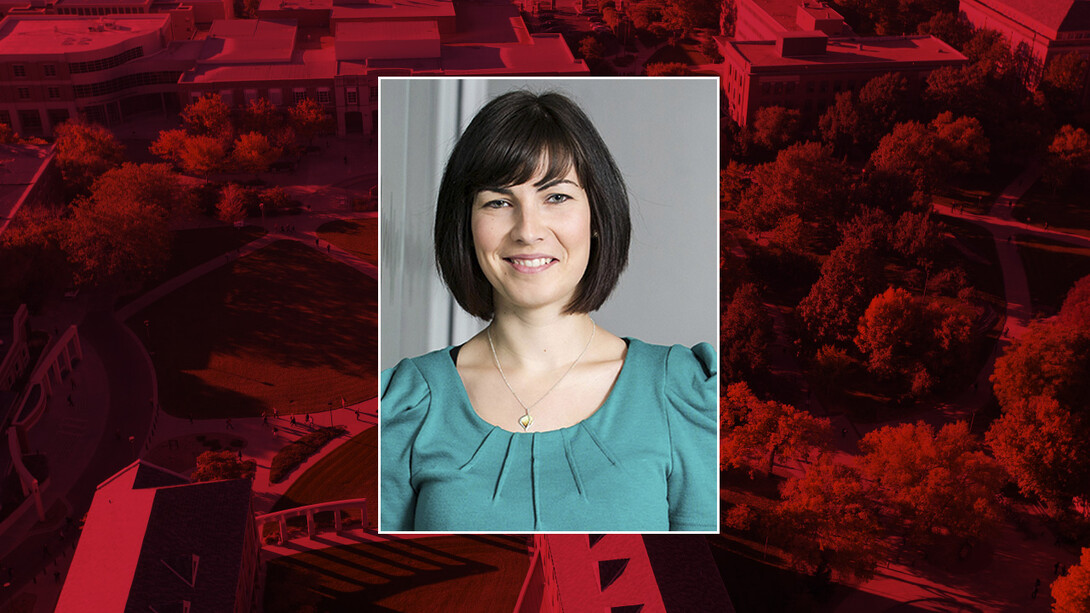
Caroline Sturdy Colls, one of the foremost forensic archaeologists in the world, will discuss her work at the Treblinka death camp in Poland in two public lectures at the University of Nebraska–Lincoln.
Sturdy Colls, associate professor of forensic archaeology and genocide investigation at Staffordshire University, will discuss, “Finding Treblinka: Forensic and Archaeological Approaches to Nazi Death Camps,” at 7:30 p.m. April 3 in Richards Hall, Room 15. The talk is part of the university’s Hixson-Lied Visiting Artists and Scholars Lecture Series.
She will also present “Forensic Approaches to Buried Remains: 21st Century Aporaches to Investigating Unlawful Deaths” at 4 p.m. April 5 in the Nebraska Union Auditorium. Both talks are free and open to the public.
Treblinka gained notoriety for being a camp where an estimated 800,000 to one million European Jews, Poles and Romani were killed during the Holocaust.
While a broad historical narrative and array of physical evidence exist on the camp, little attention has been given to its layout, nature of the mass graves and cremation pits, and processes of killing.
In 2007, a forensic archaeological investigation was launched which sought to locate, record and interpret the physical evidence that survived at Treblinka in association with the body of evidence that could be derived from archives, witness testimonies and modern digital data. Sturdy Colls will demonstrate how a considerable amount of physical evidence survives at Treblinka.
She will discuss the various different experiences of inmates sent to Treblinka and how the architecture of the camps influenced living and working conditions, and the ability of individuals to engage in acts of resistance. She will also describe the interdisciplinary approaches taken in the investigation at Treblinka that has revolutionized how mass killing sites are explored and documented.
Sturdy Colls led the first forensic archaeological investigation at Treblinka extermination and labor camps. In August 2015, she installed a new permanent exhibition, “Finding Treblinka,” at the Museum of Struggle and Martyrdom in Treblinka. The display is based on the findings of her research.
She has led forensic archaeological investigations at several other Holocaust sites across Europe, including in Adampol, Poland; Bergen-Belsen, Germany; Semlin, Serbia; and Alderney, Great Britain. She is the author of numerous publications concerning forensic and Holocaust archaeology. Her most recent volume “Holocaust Archaeologies: Approaches and Future Directions” was published in 2015.
The remaining lectures in the spring Hixson-Lied Visiting Artist and Scholars Lecture Series include:
Graphic designer Ellen Lupton at 5:30 p.m. April 6 — Lupton is a writer, curator, educator and designer. She is the senior curator of contemporary design at Cooper Hewitt, Smithsonian Design Museum in New York City.
Sculptor David Lobdell at 5:30 p.m. April 13 — Lobdell is professor of fine art and chair of the Department of Visual and Performing Arts at New Mexico Highlands University.
Photographer Lawrence McFarland at 5:30 p.m. April 20 — McFarland, who received his master’s of fine arts degree from the University of Nebraska–Lincoln in 1976, is professor emeritus from the University of Texas at Austin, where he taught from 1985 until 2013. He was awarded the first William and Bettye Nowlin Endowed Professorship in Photography in 2003.
For more information, call 402-472-5522.







